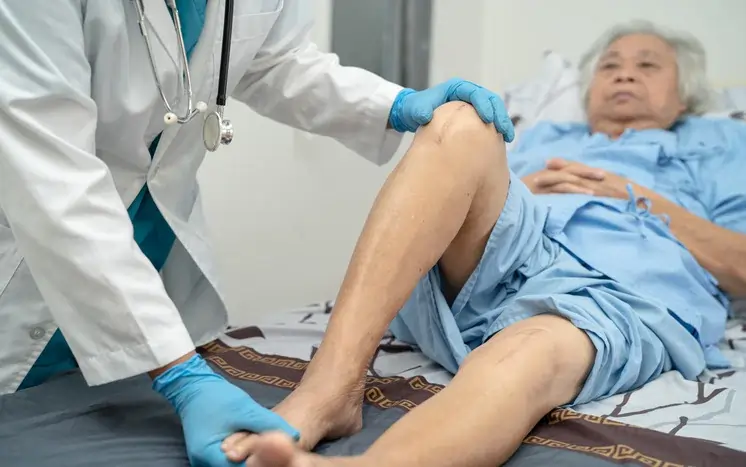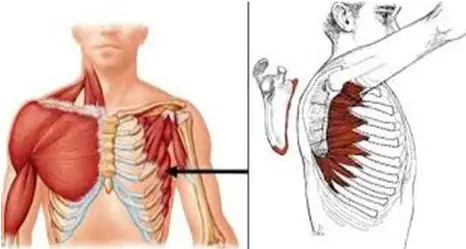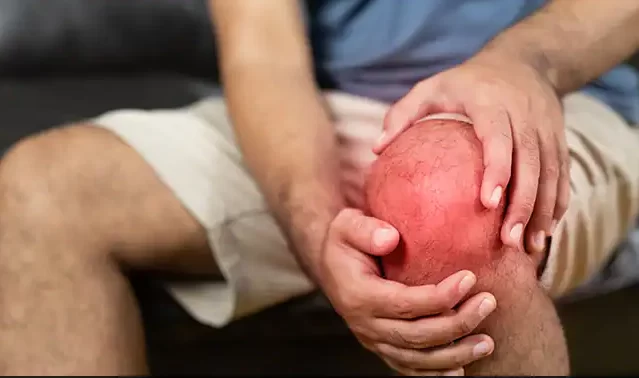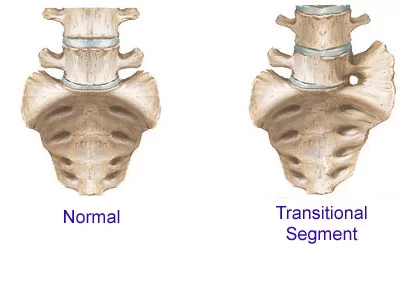How Long does Knee Pain Last after Replacement
Introduction
Most patients experience severe pain during the first few weeks, which then gradually goes away over the next few months. It can take four months to a year to fully recover and return to normal activities, but other people may take longer.
- First few weeks: During the first several weeks, as your body becomes used to the artificial joint, you should anticipate considerable pain.
- Two to four weeks: When you start doing everyday tasks like standing and walking again, you can still feel some pain.
- Three months: Swelling and bruising may still be present, but pain should be lessening.
- Six months: Some people might still feel some soreness, which might not go away for a few more months.
- A year: It may take up to a year to fully recover, during which time strength and endurance will continue to increase.
Knee replacement, additionally referred to as knee arthroplasty, is a treatment option for patients who experience persistent pain. For individuals with severe arthritis or injuries, knee replacement surgery can significantly improve their quality of life by providing increased mobility and relief from persistent pain.
Most individuals can resume their regular activities after fully recovering since their range of motion has improved.
Even though it takes a long time, it is a simple procedure that makes use of advanced surgical techniques. Surgery is typically thought of as painful and uncomfortable. Any surgical operation may cause some degree of pain, but this is just temporary and can be controlled with painkillers. The good news is that the procedure’s advantages far exceed this brief pain. Continue reading to learn more about the duration and nature of TKR pain.
The healing process following total knee replacement (TKR) surgery depends heavily on recuperation and rehabilitation. After knee replacement surgery, it’s common to have some discomfort and swelling for a few weeks, and this gradually relieves as part of the healing process.
Understanding Knee Replacement Surgery
 Understanding Knee Replacement Surgery
Understanding Knee Replacement Surgery
In knee replacement surgery, sometimes referred to as knee arthroplasty, a damaged or arthritic knee joint is replaced with an artificial one. Pain relief and increased mobility are the goals of this procedure.
In a total knee replacement, a metal, plastic, or ceramic prosthetic is used to replace the entire knee joint. Patients who have considerable joint injury or severe arthritis are usually advised to have this treatment. As a result, a partial knee replacement preserves as much of the original bone and tissue as possible by replacing only the damaged area of the knee joint. Patients whose knee injury is restricted to a certain area might consider this option.
The following steps are often included in the knee replacement surgical procedure:
- Anesthesia is given to the patient, and they are prepared for surgery.
- Removal of damaged tissue: The bone and any arthritic or diseased tissue are removed by the surgeon.
- Implantation: After the prosthetic joint is placed, it is made sure to fit and work as intended.
- Closure: The patient is sent to the recovery room to start the healing process once the incision is closed.
- By being aware of these processes, patients can better understand the process and get ready for their knee replacement surgery.
Overview of Pain After Knee Replacement
This is a result of the actual surgery, which includes cutting into bone, tissue, and the body’s normal healing inflammatory reaction. Pain normally subsides with time and proper care; however, each patient’s experience is different. To address any underlying problems, it’s crucial to speak with your healthcare professional if your pain continues for more than a year.
Following a knee replacement, pain is common and expected, particularly during the first few weeks as the knee joint and surrounding tissues recover from the procedure. It’s important to know what’s normal, what’s not, and how to handle pain during the healing process, even though most individuals eventually experience less pain. However, as the body becomes used to the replacement joint, the painful sensation will eventually go away with the right treatment and pain management techniques.
Knee Replacement Recovery Timeline and Pain Management Steps
 Knee Replacement Recovery Timeline and Pain Management Steps
Knee Replacement Recovery Timeline and Pain Management Steps
There is a known timetable for your knee replacement recovery, with several phases where your level of pain may change:
Strong medicines will be used to manage the severe pain, which is likely to occur in the initial days following surgery. It is common to experience bruising, stiffness, and swelling.
- Weeks 1–2: Your medical team will probably cut back on your medication at this point.
- Weeks 3-6: Pain is considerably lessened, though it might still be felt when performing physical therapy activities. Stiffness and swelling should keep going down.
- Weeks 7–12: By this point, the majority of patients report much reduced pain and increased mobility. Feeling a bit uncomfortable after doing something is common.
After three months, pain should be reduced, but while the body recovers completely, some patients may continue to have minor, sporadic pain for up to a year. Persistent pain that does not go away with time could be a sign of chronic pain that needs more medical attention.
What’s Normal
- After surgery, you should anticipate some pain and edema for a few months. Modern technology and improved surgical techniques, like robotic arm-assisted technology, have made the rehabilitation from a knee replacement easier and less painful.
- However, it is normal to experience pain and edema after your treatment, particularly at night and while you are active.
- After surgery, most patients can return to their regular activities with less pain three to six weeks later.
What’s Not Normal
Notify your doctor right away if you see any indications of surgical complications. Recognize these indicators of surgical complications:
- Blood clots
- Growing pain in the calf
- Ankle, foot, or calf inflammation that has just appeared
- Sensitivity or redness around your knee
- Sudden shortness of breath and chest pain
- Implant loosening
- Even years following surgery, pain, edema, or infection-related discharge may manifest.
- Infection
- Chills
- High fever
- Increased pain during activity and at rest
Give your doctor or orthopedic surgeon a call to explain your symptoms if you think you may have an infection, blood clot, or implant failure. You will receive instructions from your provider on additional care. You might need to talk about revision surgery to fix the knee after recent wear and tear if the implant is loosening. You will also receive education from your healthcare staff on how to prevent any issues.
Factors Affecting Pain Length
The length of pain following knee replacement surgery varies depending on a number of factors, and each patient’s recovery path is different. These consist of:
- Pre-existing conditions: People who have additional health problems, including diabetes or obesity, may heal more slowly and endure pain for a longer period.
- Age and level of fitness: Patients who are younger and more fit may recuperate faster and endure less chronic pain than those who are older.
- The scope of the procedure: Pain may last longer after more complicated surgery.
- Post-operative care: The speed at which pain goes away depends in large part on how effectively you follow physical therapy and rehabilitation regimens.
- Speaking with knee specialists can yield insightful information and customized recovery regimens based on your unique requirements and medical background.
Types of Knee Pain Experienced
During the healing process, one may suffer many kinds of pain:
- Surgical pain: This severe, acute pain is felt just after the procedure and should be effectively treated with recommended drugs.
- Swelling, heat, and redness surrounding the joint are common symptoms of inflammatory pain, which happens when the body recovers.
- Soft tissue and muscle pain: When you start rehabilitation exercises, the muscles around your knee may hurt as they get stronger and more flexible.
- Neuropathic pain is a type of nerve pain that presents as symptoms such as burning, tingling, or shooting. This normally goes away, but sometimes it doesn’t.
How to Relieve Pain
Your doctor will give painkillers for temporary relief just after surgery. Acetaminophen, nonsteroidal anti-inflammatory drugs, or stronger prescription painkillers are examples of possible medications. As directed, take all prescriptions.
The pain might be lessened by going to your physical therapy appointments. A series of safe workouts for your mending knee joint will be prescribed by your physical therapist. You might be advised to walk for 30 minutes and work out for 20 to 30 minutes, two or three times a day, during the initial stages of your recuperation. Use a cold pack and raise your leg a little to lessen inflammation. Another way to lessen edema is to wear compression stockings.
When to Seek Medical Attention
Even while pain is a natural aspect of healing, some symptoms could point to problems and should make you consult a doctor:
- Pain that, after two weeks, gets worse rather than better
- Unusual warmth or redness near the knee
- Chills or a high fever
- Suddenly, intense pain coupled with a sense of unsteadiness
- Breathing difficulties (which may indicate a blood clot)
Get in touch with your surgeon or healthcare practitioner right away if any of these symptoms appear. After knee surgery, it’s critical to keep an eye out for complications to guarantee a speedy recovery and take quick care of any problems.
Importance of Physical Therapy
Physical therapy is required for a complete recovery following knee replacement surgery. A customized rehabilitation program increases circulation, hastens the healing process, and helps you restore full mobility.
By ensuring you’re performing exercises correctly, working with a physiotherapist lowers your risk of developing long-term pain or issues. In order to promote appropriate healing and restore full mobility following total knee replacement surgery, physical therapy is very crucial.
Nutrition and Recovery
 Nutrition
Nutrition
Following knee replacement surgery, a proper diet is crucial to the healing process. Healing, inflammation reduction, and general health can all be supported by a well-balanced diet full of vital nutrients. The following dietary advice can help in knee replacement recovery:
- Protein: To promote muscle growth and repair, include foods high in protein, such as lean meats, fish, eggs, and dairy products. Protein is crucial for preserving muscle mass and healing injured areas during recovery.
- Omega-3 fatty acids: To help lower inflammation, eat foods high in omega-3 fatty acids, such as walnuts, chia seeds, and salmon. These good fats can help control pain and edema after surgery.
- Vitamin C: To promote collagen synthesis and wound healing, eat foods high in vitamin C, such as citrus fruits, berries, and leafy greens.
- Calcium: To promote bone health, make sure you consume enough calcium-rich foods, including dairy products, leafy greens, and fortified plant-based milk. Both the recovery process and strong bones depend on calcium.
- Hydration: To stay hydrated and aid in the healing process, drink a lot of water. Maintaining adequate hydration promotes circulation and facilitates the transfer of nutrients to the tissues that are mending.
To aid in knee replacement recovery, think about taking the following vitamins in addition to a healthy diet:
- Supplements containing chondroitin and glucosamine can enhance general joint health by lowering inflammation and joint pain.
- Turmeric: Turmeric contains a chemical called curcumin, which has anti-inflammatory qualities that may help lessen pain and swelling.
- Ginger: Ginger can help reduce pain and inflammation because of its anti-inflammatory qualities.
- Following knee replacement surgery, patients can improve their recuperation and promote their general health by concentrating on a nutrient-rich diet and using advantageous supplements.
Long-Term Pain Expectations
After a full recovery, which usually occurs roughly a year later, the majority of patients have little to no pain. Some people, however, could experience pain from time to time, particularly in colder climates or after prolonged physical exercise. To prevent overexertion, it’s critical to keep up your strengthening workouts and pay attention to your body. Setting reasonable expectations for long-term results can be facilitated by being aware of the normal recovery period and lifetime of knee replacements.
Most patients can anticipate a major decrease in knee pain and a return to their regular activities with enhanced mobility and quality of life if the proper care and support are provided.
Conclusion
The effects of a total knee replacement vary from person to person. Talk to your healthcare provider about your degree of pain and inflammation, and let them know if anything changes suddenly. Physical therapy, elevation, cold packs, and medication can all help to lessen pain and hasten recovery. The possibility of a fresh lease on life, free from persistent knee pain, is presented by knee replacement surgery.
You can rise to the top and achieve a strong, healthy knee by implementing the techniques described in this guide, taking an active role in your recuperation, and committing to good habits. Remind yourself that you are not traveling alone. Celebrate your accomplishments, rise to the challenge, and anticipate a time when you will have more freedom and movement.
FAQs
After a knee replacement, where will I experience pain?
The knee joint and the soft tissues surrounding the operated knee are typically where knee replacement pain is felt. In addition, you might experience pain in areas of your body other than your knee. This is known as referred pain, and it usually affects your calves, groin, lower back, and hips. Your altered posture (the way you stand) and gait may be the primary cause of this.
How long does it take for post-operative knee pain to go away?
Your medical staff will probably start lowering your dosage at this point. From Week 3 to Week 6, there is a noticeable decrease in pain, while it might still be felt when performing physical therapy activities.
What time will it feel normal after my knee replacement?
After a total knee replacement, most patients may need up to three months to return to most activities, and it will probably take them six months to a year to fully recover to their peak strength and endurance. Once more, this is heavily influenced by patient expectations, supplementary medical issues, and preoperative conditioning.
Three years after having a knee replacement, why is my knee still hurting?
After two years, decline and loosening of the components of the knee replacement prosthesis may cause problems. Debris buildup from the wear of the plastic spacer between the metal parts may result in pain, irritation, and even implant failure.
With knee pain, is it preferable to walk or rest?
One way to manage pain is to treat it when it occurs. Take a break from your activity and relax if your knee hurts. When resting, elevate your knee, use ice to minimize inflammation, and think about applying a compression bandage.
After a knee replacement, is it possible to run?
Although many people can resume running following knee replacement surgery, this is not always the case. It’s critical to follow a customized recovery plan and speak with your physician.
What is the duration of pain following a knee replacement?
Knee replacement surgery frequently causes pain and pain, which is typically tolerable. In the initial weeks, most people feel a lot of pain, which eventually goes away as the healing process goes on. Although you might be able to return to most normal activities in four to six weeks, it may take up to a year to fully recover and get rid of the pain.
Reference
- Pain after knee replacement? Learn what’s normal and what’s not | CHRISTUS Health. (n.d.). Pain After Knee Replacement? Learn What’s Normal and What’s Not | CHRISTUS Health. https://www.christushealth.org/connect/your-health/orthopedics/pain-after-knee-replacement
- Carter-Jones, R. (2025, March 27). How long should the pain last after knee replacement? St John & St Elizabeth Hospital. https://hje.org.uk/blog/how-long-should-pain-last-after-knee-replacement/
- Admin. (2024, March 13). How long does pain last after total knee replacement? | Post TKR pain. Medfin Blog. https://www.medfin.in/blog/orthopaedic/how-long-does-pain-last-after-total-knee-replacement/
- Wood, J. (2025, May 23). Knee replacement recovery time – tips and timelines. Practice Plus Group. https://practiceplusgroup.com/knowledge-hub/knee-replacement-recovery-guide/







